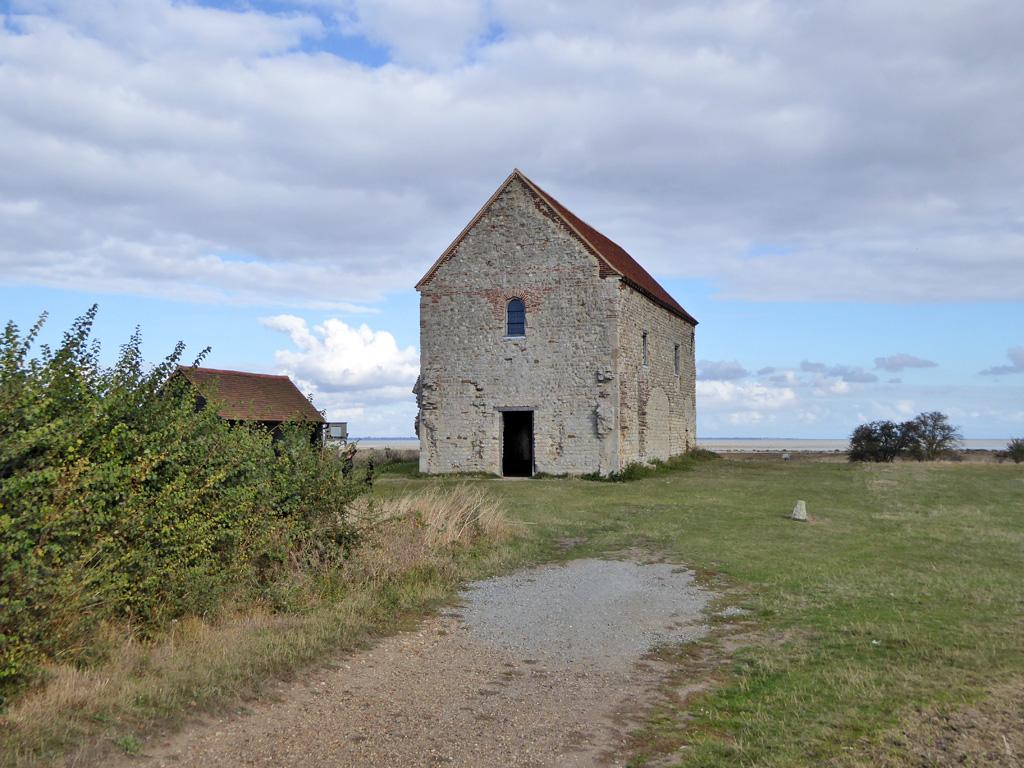When the lane stops being metalled, a footpath continues to the little chapel, right beside the mudflats. This is one of the oldest churches in Britain. It is was built on the site of the gateway of a Roman fort and using its stone, sometime after 653.
The builder was St Cedd, from Lindisfarne, who founded many churches. Only the nave remains, but the outlines of the eastern apse, and of the north and south porticus can be seen on the ground. A monastery that was also here was destroyed during Danish raids in the 9th century.
The church was still in use in the 16th century, and partly owes its survival to its use as a seamark for fishermen and sailors. In the 17th century it became a barn, and holes were punched in the walls to make barn doors.
Restoration and reconsecration took place in 1920, and today the inside of the chapel is simple and serene, with benches and an altar and wall mounted crosses at the east end.
There is a popular, annual pilgrimage to the chapel from the village, and many people visit the chapel throughout the year on their own private pilgrimages.



